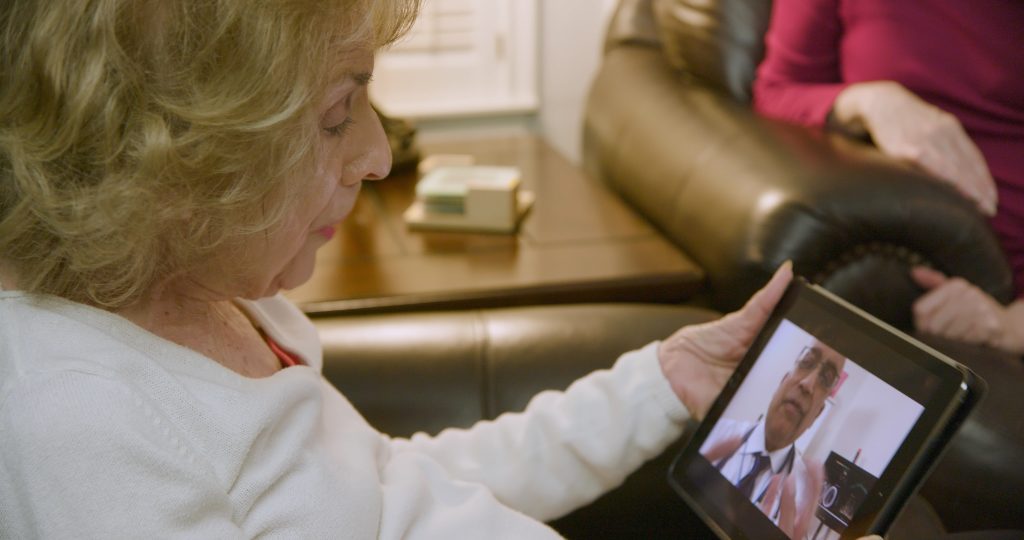Continued access to telehealth services will remain a priority for health care providers across the country when the Public Health Emergency (PHE) ends on May 11. This news roundup highlights extended legislative flexibilities regarding telehealth in Virginia, how telehealth has helped reduce fatal overdose risk, a new bill seeking to eliminate deductibles and increase telehealth, and proposed rules regarding telehealth prescriptions.
Expanded Telehealth Services ‘Here to Stay’ in Virginia as Public Health Emergency Ends
Virginia officials say many legislative flexibilities during the PHE have been signed into law for patients with private insurance and Medicaid. Services here to stay include the ability to see an out-of-state provider not licensed in Virginia for one year after establishing an in-person relationship.
Some flexibilities will come to an end, including the ability to use platforms that don’t comply with restrictions on medical privacy such as FaceTime, and the ability to prescribe via telehealth could change, pending a decision made by the U.S. Drug Enforcement Agency.
Read the full breakdown of Virginia legislation impacted by the PHE in this article by Virginia Mercury, which includes insight from the VTN board chair as well as stats from VTN’s Benchmarking Telehealth in Virginia survey.
Proposed Changes to Telehealth Prescriptions
PHE provisions allowed patients to receive medical care and prescriptions via telehealth without needing to meet their provider in person. New proposed rules would allow for certain prescriptions to continue to be administered online after the PHE ends. If and when those rules go into effect, providers will need to follow different and more restrictive guidelines when writing prescriptions for controlled medications like Adderall, OxyContin and Xanax.
Read more about these potential changes from this article in The New York Times.
*On May 9, the DEA issued temporary extended flexibilities regarding tele-prescribing. Read the latest here.
Increased Telehealth Services, OUD Medications During COVID-19 Associated with Reduced Fatal Overdose Risk
The availability of telehealth services and medicine for those with opioid induced disorders has been cited as a reason for reduced fatal drug overdose among Medicare beneficiaries according to a new study published by JAMA Psychiatry. In this national study, researchers analyzed data before and during the COVID-19 pandemic regarding beneficiaries of telehealth services and medications for those with opioid use disorders. Key discoveries of this study found that Medicare beneficiaries that began opioid use disorder-related care during the pandemic including telehealth services were 33% less likely of a fatal drug overdose.
Read the full findings of this study at the National institute on Drug Abuse.
New Bill Seeks to Increase Telehealth Use by Eliminating Deductibles in Health Savings Accounts
On March 28th, six US senators and representatives proposed a bill to increase telehealth use through the “Telehealth Expansion Act.” This piece of legislation proposes a permanent waiver created by the CARES Act to allow Americans with Healthy Savings Accounts (HSA) access to telehealth services without having to meet their deductible first. This bill focuses on offsetting financial hardships that will soon begin to emerge from the end of PHE. Other legislation focusing on telehealth is the Telehealth Benefit Expansion for Workers Act which works to allow access to employer-sponsored telehealth benefits for US workers. This bill would allow employers to offer workers stand alone telehealth benefits much like dental and vision care.
Read more on these legislation proposals at Telehealth.org.
Survey: 80% of consumers have used telemedicine
According to Rock Health’s 2022 Digital Health Consumer Adoption Survey, 80% of all respondents have used telemedicine within their lifetime and prefer receiving prescriptions and care for minor illnesses through telemedicine channels. 8,013 US adults participated in this survey about their digital health experience with findings including use of audio-only and asynchronous telemedicine modalities to be the most common within the past year. This year also saw an increase in use for historically underserved communities within health care including Hispanic consumers whose use of telemedicine rose to 82%. Other vulnerable communities who saw a rise in telemedicine use were respondents 55 years and older (76%) and those in rural areas (73%).
Read the full results of this survey at Mobi Health News.
As the end of the PHE approaches, new guidelines and extensions will modify what access to care looks like.
To stay up to date with the everchanging legislative updates regarding the end of the PHE, sign up for monthly updates from VTN.

